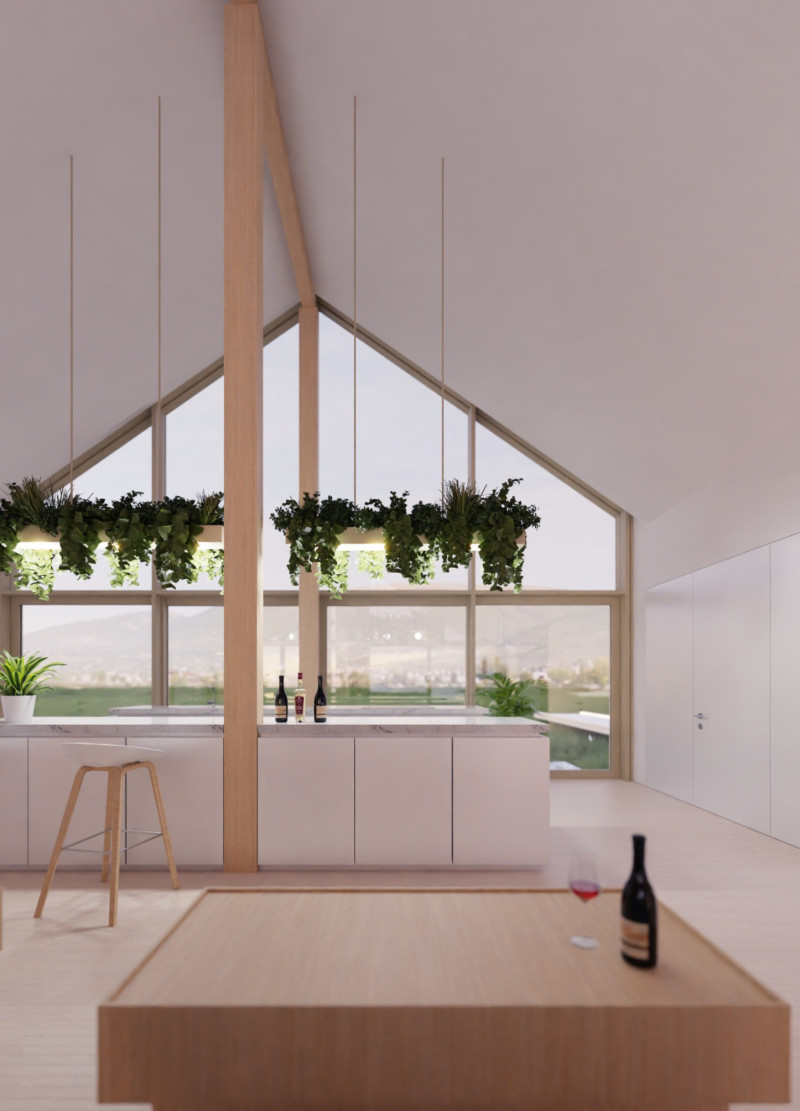5 key facts about this project
Sustainable Architectural Design
A significant aspect of the Tili Wine project is its commitment to sustainability through thoughtful architectural design. The guest houses and community house are strategically arranged in parallel, maximizing natural light exposure and enhancing views of the scenic landscape. Use of local, renewable materials is another defining feature, underscoring an environmentally responsible approach. The wooden façades provide warmth, while large expanses of glass create a seamless transition between indoors and outdoors.
The architectural design incorporates key elements that prioritize ecological considerations. Photovoltaic systems generate renewable energy, while rainwater collection and battery storage systems are integrated into the architecture, demonstrating advanced techniques in resource management. The use of reclaimed materials, such as refurbished bricks, highlights a commitment to minimizing waste and promoting a sustainable building practice.
Innovative Spatial Configurations
The Tili Wine Guest Homes utilize innovative spatial designs to enhance functionality and foster community interactions. Each guest house features an open-concept layout that combines living, kitchen, and dining spaces. This design not only facilitates social connectivity among occupants but also encourages a shared experience of the natural environment. The inclusion of reading corners near fireplaces and outdoor dining areas enriches the living experience, reinforcing the project’s focus on relaxation and social engagement.
Additionally, the community house serves as a central hub for guests, featuring communal dining and lounge areas. This intentional design fosters interactions among visitors, creating an inviting atmosphere conducive to shared experiences. Techniques such as natural ventilation and efficient ergonomic layouts ensure comfort while maximizing energy efficiency in line with modern sustainable practices.
The Tili Wine Italy Guest Homes present a distinctive architectural solution that marries ecological responsibility with contemporary living. Through their innovative design strategies and commitment to sustainability, they offer a unique opportunity for guests to experience the charm of Umbria in a thoughtfully crafted environment. To delve deeper into the architectural plans, architectural sections, and architectural designs of this project, readers are encouraged to explore further details of the Tili Wine project presentation.


























